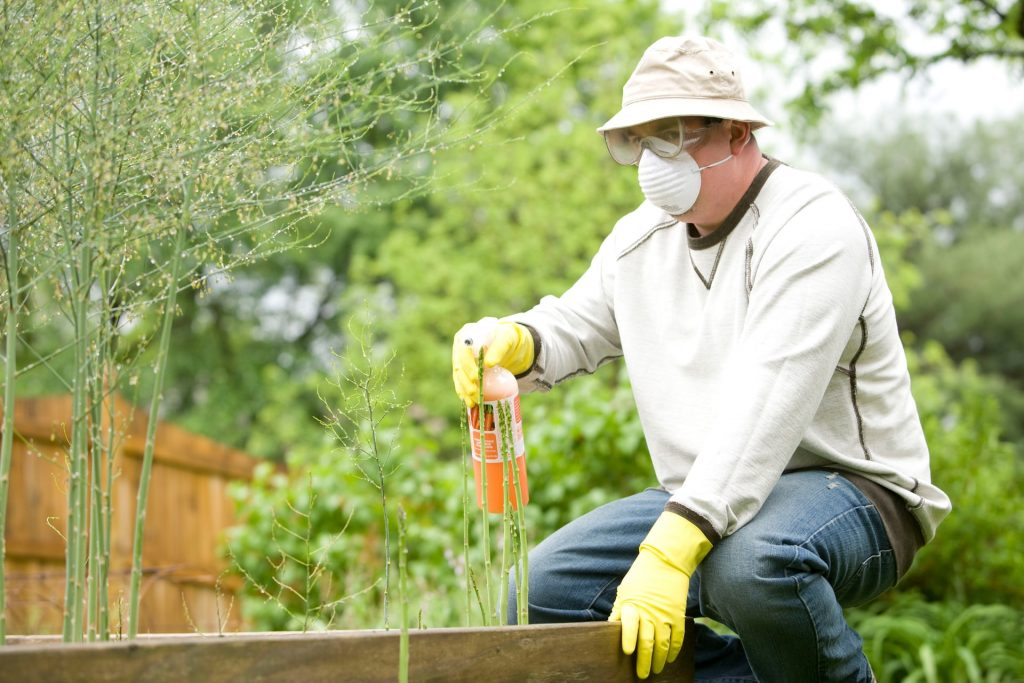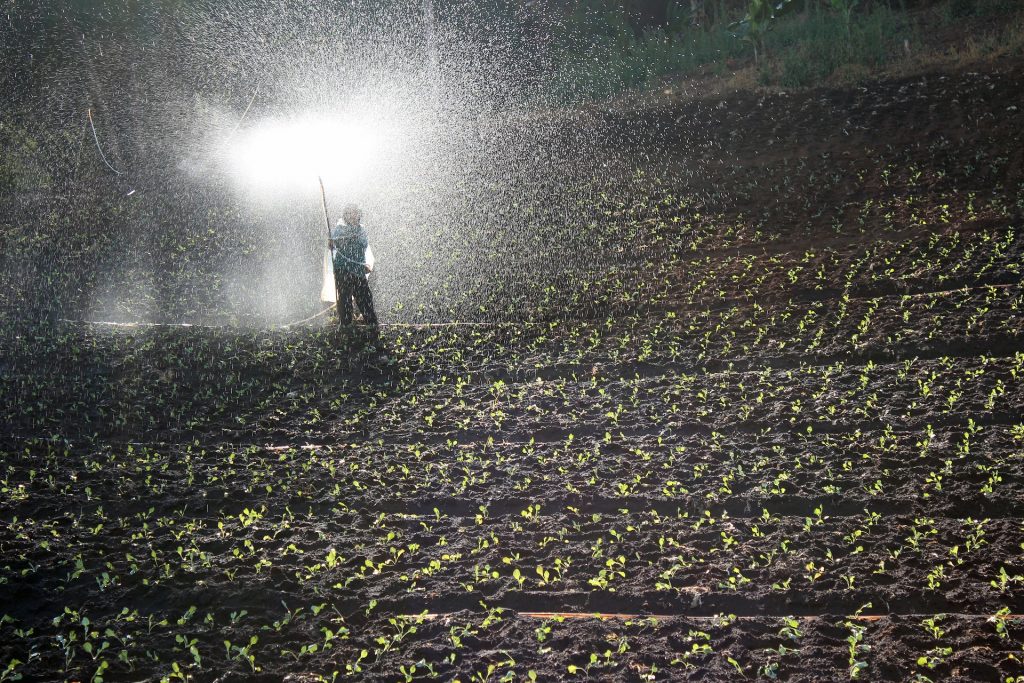What is fertilizer?
Simply, Fertilizer is a natural or artificial substance containing essential nutrients that are when applied to soil or plant tissues ameliorates the growth and productivity of plants.
Is it necessary to fertilizer seedlings too?
The first set of leaves that unfold, called cotyledons developed when a seed sprouts. Cotyledons depend on reserved food material present inside the seed. After the development of additional leaves, cotyledon senesce and fall off. But when the second set of leaves appears, you should use a dilute solution of fertilizer to feed your seedlings. Mix the fertilizer at half the recommended rate and apply it to the seedlings twice a week. Continue this feeding program until transplanting. Water-soluble fertilizer is considered to be best for it.
Maintenance of soil pH
Before planting, you should be well known about your soil pH. Some nutrients in the soil will not be dissolved and hence will not be available to the plants if the soil pH is imbalanced i.e. either acidic(4-5) or basic(8-9). Most of the plants prefer soil pH between 6 and7.5(neutral=7). However, there are some plants that prefer acidic soil such as Rhododendron, Pin oak, Magnolia,e.t.c and some prefer saline soil such as sorghum, cereals, sugar beets, Bermuda grass, tall Wheat,e.t.c.That means you have to maintain soil pH depending on the plants you want to grow.
The only way to know the soil pH is soil testing which is rarely done by Nepalese farmers. But Nepalese farmers use compost, shredded leaves, or leaf mold which is one of the best ways to maintain pH. These materials have ‘Buffering’ effect on soil pH and help in maintaining pH level consistent i.e. 6.5.
What information does the fertilizer label give?
The N-P-K ratio on the package tells you the percentage by weight of each major nutrient. For example, an 80-pound bag of 12-7-7 fertilizer contains 12 % ( 9.6 pounds) of nitrogen, 7% of phosphorus (5.6 pounds), and 7% (5.6 pounds)of potassium, with the rest being filler for aiding to disperse the chemicals. The label on the fertilizer package only reflects immediately available nutrients.
How and when to apply fertilizer?
Leaves surfaces absorb nutrients 8-20 times more effectively than through their roots. Spraying during Critical Growth Stages such as transplanting time, blooming time, and just after fruit seeds give remarkable results. Varieties of machines are used to spray fertilizer on modern farms. Following package instructions for application direction, rate and timing are mandatory.
Organic vs Synthetic fertilizers
It is cardinal for us to know that organic and synthetic fertilizers do not provide nutrients to the soil in some way.
Since organic fertilizers are not water-soluble, they are available to plants only over a period of months or years. Exceptions are compost tea and Liquid fish or seaweed emulsion. Overtime; they help to increase soil‘s baseline fertility. They also add organic matter to the soil and help improve the texture and structure of the soil and importantly add secondary nutrients and trace elements that may be lacking. It is also true that organic fertilizers contain a very less amount of N-P-K as compared to synthetic and hence must be applied in much greater content than the latter.
Artificial or synthetic fertilizers are water-soluble and hence will be immediately available to the plants. It is good to use when plants are growing rapidly and need immediate essential nutrients. Nitrogen fertilizers have been increased by 800% between 1961 and 2019 A.D. However, its persistent use in the soil can degrade the physical, chemical, and biological properties of soil.
What happens if fertilizer is overused?
- Excess nitrogen accelerates vegetative growth and decreases reproductive growth.
- Plants cannot absorb iron and zinc if phosphorus is excessive in the soil.
- Too much phosphorus inhibits calcium absorption.
- Wind up in the groundwater and waterways.
- One of the major causes of global warming.
What is the infestation and how to deal with it?
You may think that infestation and infection are the same, Right? But these two terms have completely different meanings. Infestation refers to being invaded or overrun by pests or parasites while infection means a condition caused by bacteria, fungi, protozoa, and viruses.
There will be always the possibility of insect infestation if you grow plants. The insects that mostly infest the plants are aphids, mealy bugs, scale insects, whitefly, thrips, and many soil-dwelling insects.
Consequences of pesticides
The world has experienced an increasing tendency of using both pesticides and fertilizer every year by 10-20 %(GC,2010) because of the easy availability of pesticides. Most of the farmers have poor to no knowledge of composition, use, and safe disposal of fertilizers and pesticides. Major negative impacts of pesticides are suicidal attempts (89.5%) in less developing countries, degradation of natural soil’s physical, chemical and biological properties, physical disability due to its improper use, eutrophication, and health hazards.
Excessive and continuous use of pesticides leads to the problems of the target pest resurgence and secondary pest outbreak. Pesticides responsible for poisoning is mostly insecticides (58%). The study has revealed that young adults, females, and especially disadvantaged ethnic groups are at higher risk of pesticide poisoning.
Alternatives to pesticides
It is suggested by experts to use chemicals only in extremely necessary conditions. One can adopt other safe alternatives such as Biocontrol Agents(pest’s natural enemy), liquid manure, Microbiological control agents (Bacteria, virus, fungi, protozoa, nematode)), trap plants(Ex. Maggots prefer radishes over corn), crop rotation, Botanicals (Necotene, Rotenone), oils(Servo for scale insects), the adjustment in planting time(Ex. Okra are more attacked by fruit and shoot borer when the plant in march instead of rainy season)e.t.c.These methods are both eco-friendly and effective.
Our final take
The application of fertilizers and pesticides has both pros and cons. It depends on us how we use it. Although pesticides were used initially to increase agricultural productivity by controlling pests their adverse effects have overweighed the benefits associated with their use. Fertilizers and pesticides are now considered the key drivers of Global warming. This is the time that necessitates the proper use of pesticides to protect our agro-ecosystem and eventually health hazards associated with it.


[…] trees with its long stems covered in dark glossy green leaves and orange flowers and requires less fertilizer than other plants. You may also see this plant being sold as Hypocyrta glabra. Hypocyrta was the […]